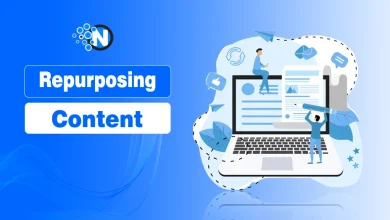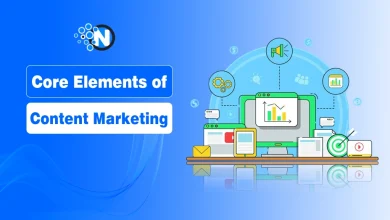Level Up Your Content Marketing Strategy with Sage Zaree

Content marketing is not an option for businesses seeking to reach and connect with their audience, but an essential tool. We sat down with Sage Zaree, a prominent voice in the content marketing space, to discuss strategies that can transform how businesses approach their content initiatives.
From understanding audience psychology to leveraging emerging platforms, Sage shares insights that can help marketers at any level elevate their game.
Let’s go through it together!
Content Marketing Mythbusters

Sage Zaree, let’s start with the fundamentals. What do you see as the biggest misconception businesses have about content marketing today?
Sage Zaree: The biggest misconception I found is that content marketing is just about creating more content. I see businesses pumping out blog posts, social media updates and videos without any real strategy behind them. They think volume equals success, but that’s backwards thinking.
Quality and relevance will always trump quantity. Your audience doesn’t need more content from you, they need better content that actually solves their problems or adds value to their lives. When I work with clients, the first thing we do is audit their existing content and often end up cutting 60 – 70% of what they’re producing to focus on what really moves the needle.
That’s a significant shift in thinking. How should businesses approach developing a content strategy that focuses on the quality over quantity principle?
Sage Zaree: It starts with deep audience research, which goes beyond just demographics, but psychographics. You need to understand the emotional triggers, pain points and aspirations of your audience. I recommend creating, content personas that go beyond basic buyer personas. These include the specific questions your audience is asking at 2 AM, the language they use when describing their challenges and the outcomes they’re really seeking.
Once you have that foundation, you can come up with the content pillars that are generally 3 – 5 key themes that are aligned with the needs of your audience and business goals. Each of these pillars should act as ladder up-content. This makes your messaging consistent, and will also help build your authority in certain areas instead of being a jack of all trades.
Thought Leadership & Authority
Speaking of authority, how important is thought leadership in content marketing and how can businesses develop it authentically?
Sage Zaree: Thought leadership is crucial, but it has to be earned, not claimed. I see too many executives writing generic LinkedIn posts trying to position themselves as thought leaders without actually having unique insights to share.
Authentic thought leadership comes from experience, data and a willingness to take positions, even controversial ones. Share your failures alongside your successes: present original research or unique interpretations of industry data. Challenge conventional wisdom when you have evidence to support your position.
The key is consistency and patience. Thought leadership isn’t built overnight. It’s built through consistently sharing valuable perspectives over months and years. I tell my clients to think of it as making deposits in a credibility bank account, every valuable piece of content is a deposit that compounds over time.
Content Distribution
Let’s talk about distribution. Many businesses create great content but struggle with getting it seen. What’s your approach to content distribution?
Sage Zaree: Distribution should actually be planned before you create the content, not after. I use a “one to many” approach, meaning, create one piece of cornerstone content, then atomize it across multiple channels and formats.
For example, a comprehensive industry report can become a webinar, a series of social media posts, an email newsletter series, podcast appearances and even short form video content. Each format serves different consumption preferences and reaches different segments of your audience.
But here’s the critical part: don’t just repurpose blindly. Adapt the content for each platform’s unique culture and user behavior. What works on LinkedIn won’t work on TikTok, even if the core message is the same.
Measuring Success
How do you measure the success of content marketing efforts? What metrics should businesses focus on?
Sage Zaree: Content marketing measurement requires a multilayered analytics approach that tracks the entire customer journey. I implement a three tier KPI framework that measures awareness, engagement, and conversion metrics.
At the awareness level, we track organic search visibility through keyword rankings for target terms, organic traffic growth month-over-month, and branded search volume increases. I look for a 15 – 20% quarterly increase in organic traffic for mature content programs, with new content contributing at least 30% of total organic sessions.
For engagement metrics, I focus on behavioral indicators: average session duration should exceed 2 minutes for blog content, bounce rates below 60%, and pages per session above 2.5. Email engagement from content should maintain open rates above 25% and click-through rates above 3%. Social engagement rate, not just likes, but comments and shares, should be at least 2 – 3% of your follower base.
Conversion tracking is where technical implementation becomes critical. I use UTM parameters and Google Analytics 4’s enhanced eCommerce tracking to measure content assisted conversions. We set up custom attribution models that give content credit for touchpoints throughout the buyer journey, not just last click attribution.
Key conversion KPIs include: content to lead conversion rates (targeting 2 – 5% depending on industry), cost per lead from content channels, and most importantly, “lead to customer” conversion rates for content sourced leads. I also track content influence on deal velocity prospects who engage with multiple content pieces typically have 23% shorter sales cycles in B2B environments.
Revenue attribution is the ultimate metric. Using marketing automation platforms like HubSpot or Marketo, we can track content’s contribution to pipeline and closed revenue. I aim for content marketing to contribute at least 25% of total marketing sourced revenue within 12 months of program maturity.
Future Trends
Looking ahead, what trends do you see shaping the future of content marketing?
Sage Zaree: We’re moving toward “hyper-personalization” at scale. The businesses that will succeed are those that can create content that feels individually relevant while maintaining operational efficiency. This means better use of data, more sophisticated segmentation and dynamic content that adapts to user behavior.
I also see a growing emphasis on community-driven content. Audiences want to participate in conversations, not just consume content. Smart brands are building platforms where their audience can contribute, collaborate, and co-create content.
Finally, there’s a return to authenticity after years of over-polished, corporate content. Audiences are craving real stories, genuine expertise and content that acknowledges the complexity of real business challenges rather than offering oversimplified solutions.
Any final advice for businesses looking to elevate their content marketing game?
Sage Zaree: Start with strategy, not tactics. Too many businesses jump into content creation without a clear understanding of what they’re trying to achieve or who they’re trying to reach. Invest time in planning before you invest money in production.
Also, be patient but persistent. Content marketing is a long-term game. The businesses that succeed are those that commit to consistently delivering value over months and years, not those looking for quick wins.
Most importantly, remember that content marketing is ultimately about serving your audience. When you genuinely focus on helping people solve problems or achieve their goals, the business results follow naturally.




